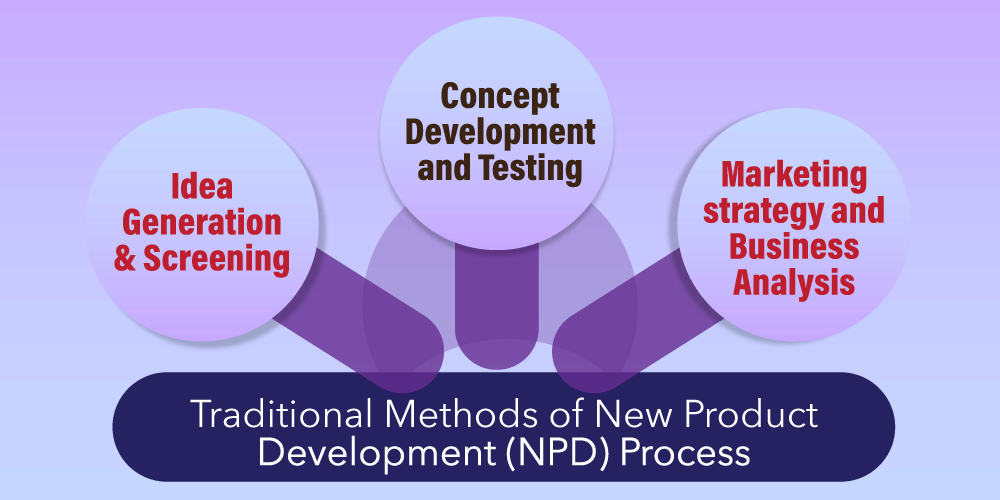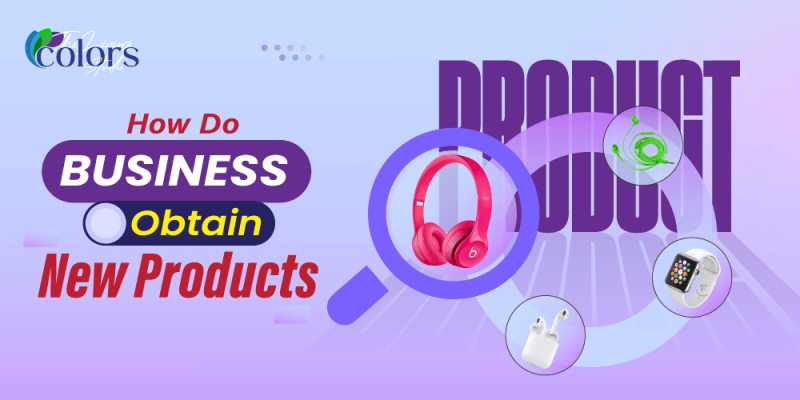Every groundbreaking product you see in stores or online started as a simple idea—a solution to a problem or a response to consumer demand. But turning that idea into a tangible, market-ready product involves a structured journey filled with challenges, strategic decisions, and innovative tools.
So, what is the most effective way of creating new products? Typically, creating a new product means the manufacturer’s job, but is it though?
While it’s traditionally believed that manufacturers drive new product development, in reality, users often play a more significant role in creating successful innovations.
Despite the lack of formal market research strategies to identify these user-generated products, manufacturers are increasingly acquiring them. This trend challenges conventional wisdom and highlights the importance of recognizing the value of user-led innovation.
But after getting all the information about what consumers want, how do businesses actually obtain new products? What do companies actually do to launch a product successfully in the market? Let’s find out…
Table Contents
Traditional Methods of New Product Development (NPD) Process

Companies follow a few categories to develop new products. Yes, feedback from the consumer is one of them, and it can let you know what product you should work on. Still, there are two other categories, “New Creative Product Development” and another one is “New To The Company Product Development.”
No matter what category we go into when developing a new product, the core methods are the same.
Product R&D: Idea Generation & Screening
The major step in developing any new product is the Research and Development(R&D) phase. In this phase, businesses usually do research on market trends, conduct product research, and dig deep into users’ wants and needs. Based on the research, they brainstorm and generate new product ideas.
They follow the SWOT analysis framework in their product research, where they pin the product’s strengths, weaknesses, opportunities, and threats. In the ideation phase, the company follows two sources: internal (marketing, customer support, sales team, or engineering department) and external (Competitors and targeted audiences).
After doing thorough market research and generating ideas, it’s time to screen the ideas. It is mainly done within the company with experts from different teams. These experts help understand the technical requirements, resources needed, and the marketability of the idea.
Concept Development and Testing (Developing Prototype)
Ideas that successfully pass the screening go into the concept development and testing phase. In this phase, businesses produce product blueprints, propose features, and have a clear target audience. Testing concepts through focus groups or prototype reviews ensures they resonate with consumers.
Nowadays, in prototyping, companies use modern tools like 3D product modeling that help them to produce revolutionary products. By rendering digital prototypes, businesses visualize products in lifelike detail without physical manufacturing.
Companies make these prototypes in-house, but mid-level and entry-level businesses sometimes lack resources. In such situations, we, the Living Colors, can come in handy. You can use our highly professional 3D modeling and rendering experts to take the burden off this phase from your shoulders and concentrate on the next phase, which is super important.
- Visualization: Enables stakeholders to view design variations.
- Cost Efficiency: Reduces reliance on costly physical prototypes.
- Market Validation: Collects consumer feedback using rendered visuals.
Companies like Nike use 3D rendering to test new sneaker designs and speed up development. According to research, integrating 3D modeling can save up to 25% of total production costs.
Marketing strategy and Business Analysis (Cost Analysis)
After developing prototypes and testing them, companies start working on their primary marketing strategy and business analysis. Even the most innovative products can only succeed with a solid marketing plan. At this stage, businesses prepare their strategies to position their product effectively and evaluate its financial viability.
- Positioning: Identifying what sets the product apart from competitors.
- Cost Analysis: Estimating production, marketing, and distribution costs. We will talk more about cost analysis in the later part of this article.
- Profit Forecasting: Determining ROI to justify moving forward.
Product Development
This is where the real practical fun begins. As of now, businesses have completed making their final prototypes of the products and have also gotten a clear idea about how to market them from the analysis. So, they almost have a successful product on paper that needs to be in the real world only.
Businesses use Minimum Viable Products (MVPs) and test core functionalities before full-scale production.
- Iterative Prototyping: Here, they create multiple versions to refine features.
- User Testing: Gathering feedback to identify flaws or improvements.
For example, software companies like Adobe employ agile product development cycles, releasing beta versions to test new features with real users. This iterative feedback loop ensures that the final product is both functional and user-friendly.
Test Marketing
This phase is also known as product beta testing. Here, businesses release the product to a limited audience or geographic area and observe its market performance. This phase allows businesses to test marketing strategies and consumer responses in real-world settings.
- Beta Testing: Engaging real users to collect insights.
- Market Trials: Evaluating pricing, branding, and distribution.
Product Launch
In this final phase, companies launch their products. A successful launch requires collaboration across departments, from marketing to customer support. Businesses use coordinated campaigns to create excitement and drive initial sales.
- Go-to-Market Strategy: Includes advertising, promotions, and influencer partnerships.
- Customer Support: Ensuring buyers have assistance during adoption.
For example, we can see Apple’s iconic product launches. They build anticipation and emphasize innovative features. It creates an unmatched sense of urgency, often selling millions of units within days of release.
How Do You Do Cost Analysis For Production, Marketing, And Distribution?
Developing a new product might be in your hands, but making it successful depends on how you market it and how you set the cost. The cost analysis of a new product depends on several factors, such as production cost, marketing cost, distribution cost, and many more.
- Define the Product Scope: Outline the product’s features, scale, and target market.
- Estimate Production Costs:
- Materials: Calculate raw material costs per unit.
- Labor: Include wages based on labor hours per unit.
- Overhead: Factor in utilities, rent, and equipment depreciation.
- Calculate Marketing Costs:
- Include market research, advertising, branding, content creation, and PR expenses.
- Assess Distribution Costs:
- Account for shipping, warehousing, retail platform fees, and packaging costs.
- Include Fixed and Variable Costs:
- Fixed costs like rent and salaries remain constant. Variable costs, like materials and shipping, depend on volume.
- Add Contingency Costs: Reserve 10-20% for unexpected expenses.
- Perform Break-Even Analysis: Use this formula:
- Use Software Tools: Use tools like Excel or QuickBooks for accurate calculations.
- Validate with Benchmarks: Compare estimates with industry data to ensure accuracy.
- Summarize in a Report: Highlight total costs, pricing strategy, and potential risks.
What are some ways businesses obtain new products?
Businesses innovate through in-house R&D, acquisitions, partnerships, and licensing. Modern technologies like 3D modeling and iterative prototyping also enhance development.
Why do businesses develop new products?
Developing new products allows businesses to meet evolving consumer needs, differentiate from competitors, and drive long-term revenue growth.
How does a product become successful?
Success stems from solving real-world problems, creating value for customers, and ensuring quality and effective marketing strategies.
What is product mix?
The product mix encompasses all products a company offers, showcasing its market diversity. For example, Coca-Cola’s mix includes beverages, water, and energy drinks.
Conclusion
To obtain a new product and make it successful, businesses must follow a proper product development process. If you are an entry-level or mid-level company wondering how businesses obtain new products, then this article is your answer. Creating and launching new products involves a step-by-step process that turns ideas into reality. With tools like 3D modeling and rendering, businesses can design products that meet customer needs and succeed in the market.
Every stage, from refining ideas to gathering feedback, combines creativity with thoughtful planning. As markets change, businesses that follow these steps and use modern tools will keep growing and delivering products that improve people’s lives.








